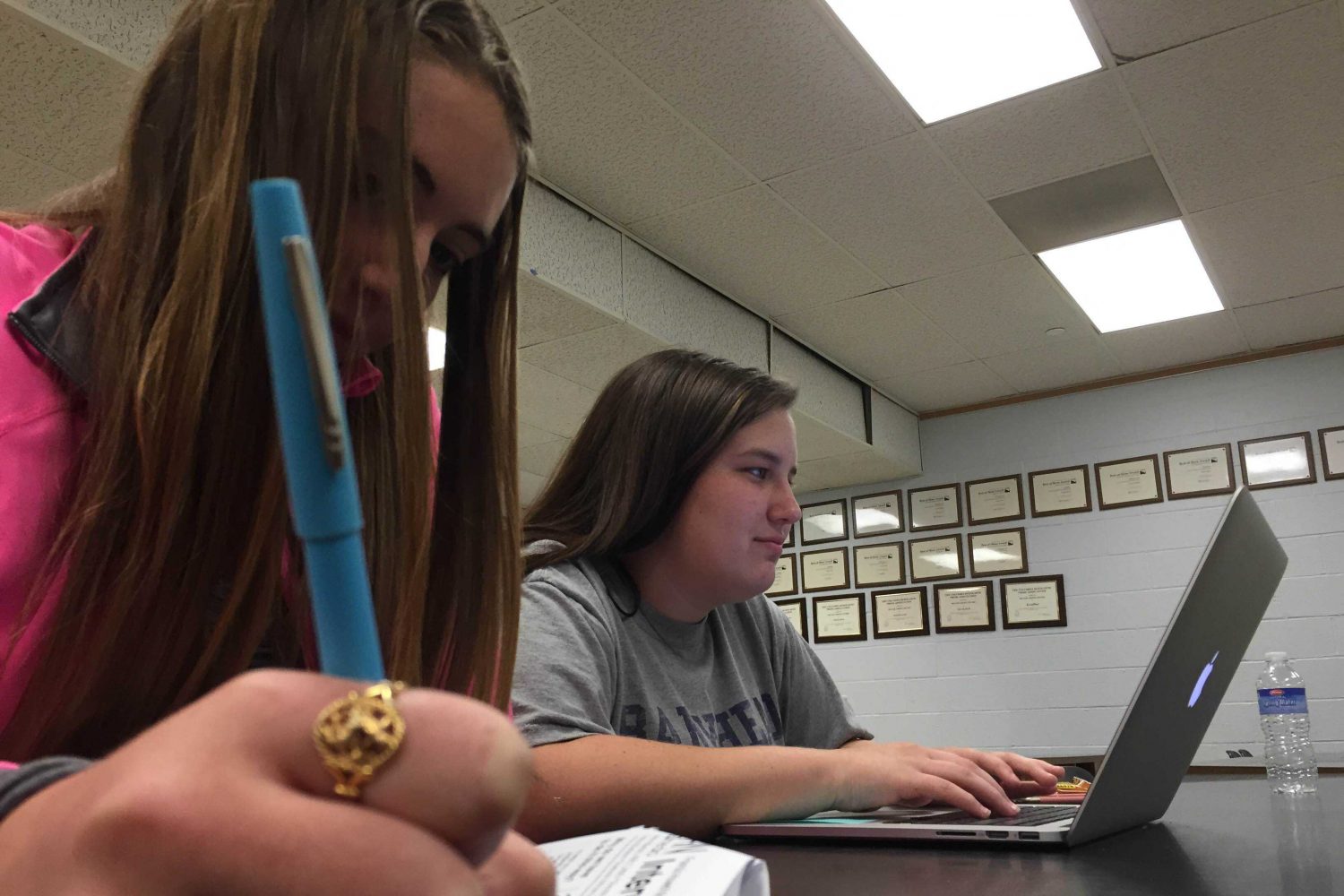Online Classes vs. In-class Instruction
Weighing the benefits and issues in the ever-growing world of online education
Published: August 24, 2015
Over the summer, credit-enrichment classes were done over online course instruction. As this is still a fairly new way of learning, students and teachers are still becoming used to it. Here’s how some people feel about the different education types.
In-class Instruction
In the ever-growing world of technology, a new imposition has been proposed. Students are turning to online classes to get credits out of the way, work with their busy schedules, and accomplish more in a less amount of time. However, online classes are not the most successful platform in furthering education.
Imagine you’re in physics class, the teacher asks you a question, and you think that you have it all figured out. When he calls on you, you’re surprised when he responds that you’re incorrect. Instead of telling you the answer he gives you a series of questions to guide you in the right direction. This direct, back and forth interaction, is essential in pushing you to your best ability. As much as a teacher inspires a student, a student can inspire a teacher. As stated by The New York Times, “In real courses students and teachers come together and create an immediate and vital community of learning.” While you may learn from an online course, it can’t be individualized to fit your learning style and your capabilities.
Another way in-class instruction can be beneficial is by providing face-to-face interaction with other students. Building relationships with your classmates and instructors improves your social skills, which can help you in a career path, or in the working world. On elearningindustry.com, they state that networking is easier in the classroom setting. Networking is beneficial when it comes time to find a job. The more people you know, the more connections you’ve established.
When learning in class, there are multiple ways to give a lesson opposed to just assigning a reading, or watching a video of someone preaching the course material to you. Many teachers play games that relate to the curriculum, or assign projects that challenge student’s creativity.
In-class instruction is significant in providing a mutual learning environment, developing social skills, and pushing creativity to it’s highest potential.
Online Classes
Notebooks, pencils, and blackboards are becoming extinct. In their place, iPad’s, styli, and SmartBoards. The changes in technology allow for a different type of learning to occur in the classroom, which allow students to work completely online, sometimes even without a teacher. This allows student to work at their own pace as well as having a course molded to their needs. Online learning is the future of education and should replace the classroom setting.
According to a study conducted by the SRI International for the Department of Education, “students doing some or all of the course online would rank in the 59th percentile in tested performance, compared with the average classroom student scoring in the 50th percentile.” This shows how online school can affect the individual. The students taking online classes are able to work at their own pace, as well as focus on topics of study they know they are weak in. The traditional classroom student may sit through three to four weeks of topics they already know. The online education system allows students to work at a faster pace and do better on exams.
The online education system is also more appealing to the college crowd. According to Phillip R. Regier of Arizona State University’s Online and Extended campus program, Arizona State has approximately 5,000 students in its education programs, both in person classes and online. In three to five years he estimates the number could triple, with nearly all growth coming from online. Online classes are more accessible to students and allow the student to make a class schedule around their work and social schedules. The idea of this is more appealing than sitting in a classroom for four years or more.
The online education system appeals more to students and allows them to do better on tests. It allows for students to learn at their own pace and can be worked around their schedule. Online education is the most beneficial tool we have.








![JV Girls Basketball Takes A Win To FZE On The First Game Of The Season [Photo Gallery]](https://FHNtoday.com/wp-content/uploads/2024/12/voccer10.24_kwallace-3-300x200.jpg)

![It's Time for the BOE to Respect Student Input [Editorial]](https://FHNtoday.com/wp-content/uploads/2024/11/Untitled_Artwork-1-300x173.png)


